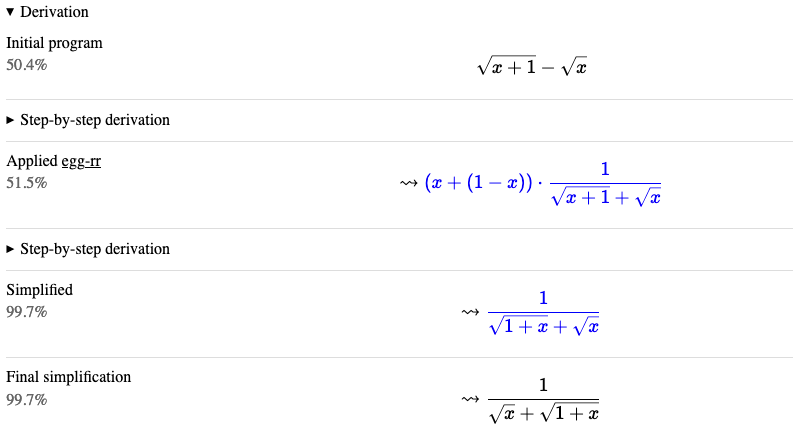Herbie 2.0 Release Notes


The Herbie developers are excited to announce Herbie 2.0! This release focuses clarity, transparency, and trade-offs.
What is Herbie? Herbie automatically improves the accuracy of floating point expressions. This avoids the bugs, errors, and surprises that so often occur with floating point arithmetic. Visit the main page to learn more about Herbie.

Join us! Join the Herbie developers on the FPBench Slack, at the monthly FPBench community meetings, and at FPTalks 2023.

Two years ago, Herbie 1.5 added the --pareto mode, wherein suggested multiple alternatives that trade off speed and accuracy. We've made this mode faster, clearer, and more reliable, and as a result, we've made this mode the default. Speed-accuracy trade-offs are central to numerics, and we're excited for Herbie to help users with these trade-offs.

We've cleaned up the report page significantly. Besides a visual redesign—we've refreshed and standardized the new fonts, colors, and spacing—we've switched to a new way of measuring accuracy and speed, which we think will be more intuitive for users and avoid some misconceptions we see users run into.

Herbie can now explain step by step how it transformed your original input into the final program. This can help you understand how Herbie works, and potentially help us identify bugs or misbehaviors. More importantly, when Herbie comes up with something truly surprising, you can now have more confidence that the answer is correct.
We've started building a prototype numerics workbench, codenamed "Odyssey". This release thus contains the beginnings of a REST API for interacting with Herbie. Our long-term goal is an interactive, task-oriented interface for working with floating-point accuracy, leveraging Herbie but also potentially other tools. A prototype is currently available in the VS Code store as the herbie-vscode plugin.
tgamma
and lgamma functions was rewritten to be more
accurate (though it remains quite slow).
We want Herbie to be more useful to scientists, engineers, and programmers around the world. We've got a lot of features we're excited to work on in the coming months. Please report bugs or contribute.
If you find Herbie useful, let us know!